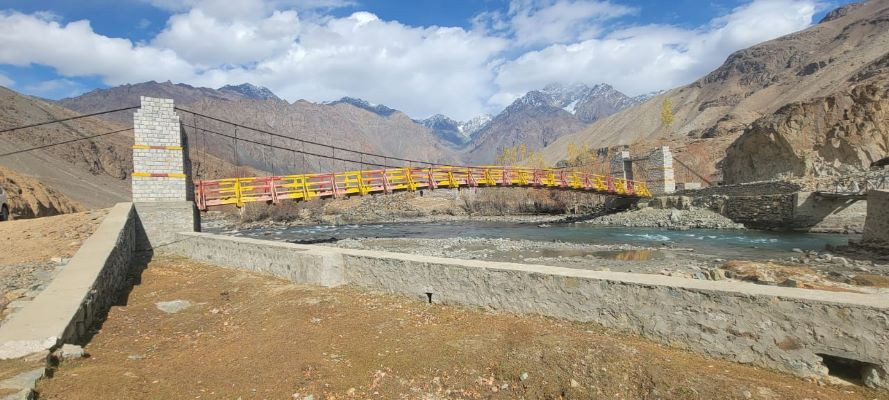
Zinat Bibi grips the reins of her cattle as she guides them across a sturdy bridge, a new addition to Chipurson valley that has transformed life for her and hundreds of other villagers.
Nestled in Gojal, Upper Hunza, Chipurson Valley lies along the border with Afghanistan’s Wakhan Corridor, a narrow strip of rugged land that separates Pakistan from Tajikistan and links the valley to distant, ancient trade routes.
This isolated valley, known for its stunning landscapes and unforgiving terrain, is home to around nine small villages, each scattered across a vast, mountainous landscape. The residents of these villages, including Reshit, Yarzrich, and Kirmin, lead challenging lives amid the breathtaking surroundings, relying on agriculture and livestock for survival.
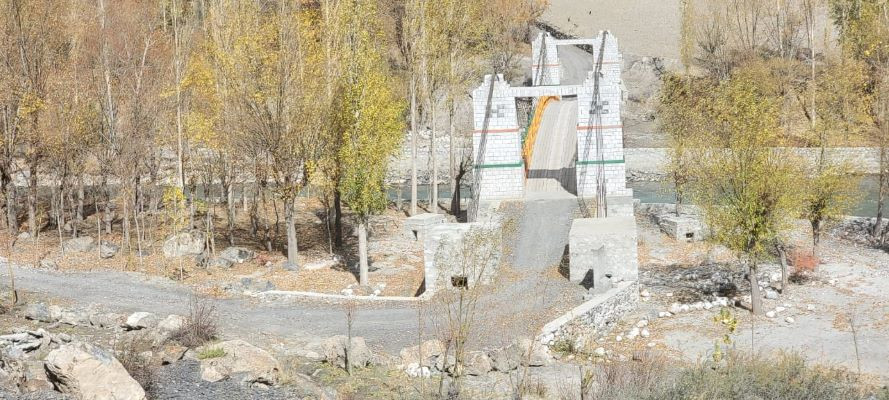
In this remote part of Gilgit-Baltistan, even basic resources are difficult to access, and earning a stable livelihood can feel like an uphill battle. Yet, Zinat and her husband have worked tirelessly, relying on agriculture, livestock, and an occasional trickle of income from their small guesthouse to support their three children.
With its vast, rugged terrain and strong adherence to traditional customs, development here has always been a formidable task. Limited financial resources and geographic barriers have hampered successive governments' ability to deliver basic infrastructure and services to the farthest valleys. Chipurson is no exception—its remote location has kept it on the margins of progress.
However, the Aga Khan Rural Support Programme (AKRSP) stepped in years ago, committed to uplifting and improving the lives of these underserved communities.

For Zinat, life became significantly easier thanks to a simple yet transformative intervention: a bridge, built as part of a broader infrastructure initiative under AKRSP’s Central Asia Poverty Programme (CAPP).
Founded in 1982, AKRSP has been working in Gilgit-Baltistan and Chitral, striving to enhance livelihoods, develop infrastructure, and reduce poverty across isolated communities.
Under CAPP, several bridges like Zinat’s have been built in underserved valleys to strengthen food security, improve transportation, and provide access to essential resources.
In Zinat’s case, the bridge has made the journey to grazing fields safe and efficient. Previously, Zinat would lead her cattle across a risky ravine, an exhausting task that took hours of her day and jeopardized the cattle’s safety.
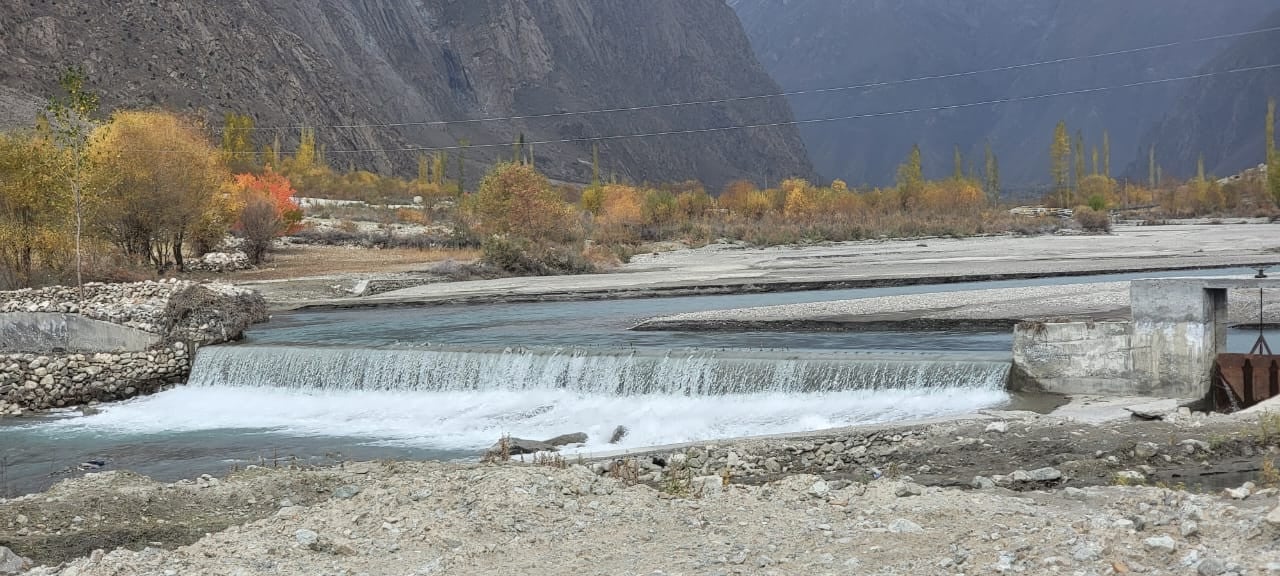
Without access to better grazing fields, the livestock often went underfed, producing less milk and meat, which reduced the family’s income and food security. But crossing the ravine also posed real dangers; some cattle had been lost to the gushing water in the past, an economic blow that the family could ill afford.
“There were days when I held my breath, praying they would make it safely across,” Zinat recalls. “It was a constant worry, but there was no other choice,” she added.
Zinat’s story is not unique in the remote valleys in Gilgit-Baltistan. At least 50,000 others in the programme intervention areas in Gilgit-Baltistan have been benefiting from these community infrastructures.
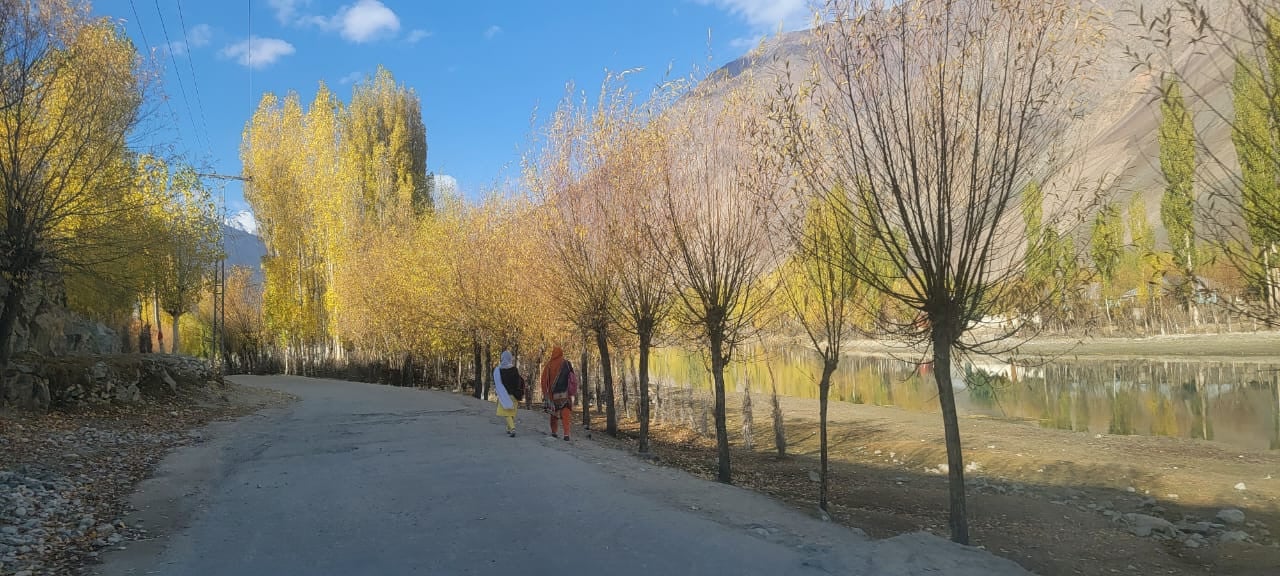
In Ghizer district’s farthest village of Silgan in Hundur valley, Mushtaq Khan is yet another example. He has also seen his life transformed by a bridge. Like Zinat, Mushtaq has long depended on agriculture for his income, but the remote location and challenging terrain made transporting produce to market slow and unpredictable.
Before the bridge, Mushtaq and other farmers in Hundur would often miss the ideal time to sell their fruits and vegetables. By the time they reached the market, their produce was less fresh, and its value was lower. This delay and loss of quality meant a significant loss of potential income for Mushtaq and hundreds of other farmers in the village.
However, the bridge built by AKRSP has changed that, giving Hundur’s farmers timely access to markets in Ghizer and even in Gilgit, where they can sell fresh produce at better prices. “The bridge is not just a pathway,” Mushtaq says. “It’s a lifeline. Now, we can get to the market while our fruits and vegetables are still fresh, and that has made all the difference,” he added.
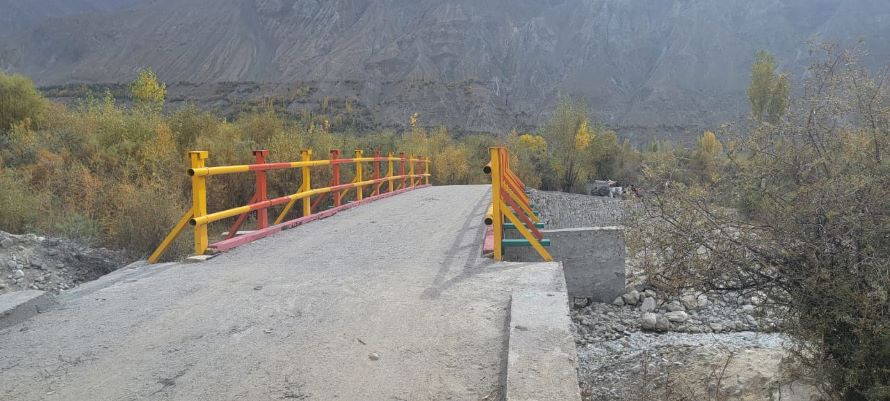 By selling produce in a timely manner, Mushtaq and other farmers in his village are experiencing a level of financial security they had never imagined, and the entire community is gradually becoming more prosperous.
By selling produce in a timely manner, Mushtaq and other farmers in his village are experiencing a level of financial security they had never imagined, and the entire community is gradually becoming more prosperous.
These examples underscore the broader impact on daily lives of Gilgit-Baltistan’s rural residents, says Hikayat Shah, an elder who heads a local community organization called LSO.
“These bridges do more than simply connect villages; they bring security, opportunity, and a chance for communities to break free from the cycle of poverty.’’
In addition to building infrastructure, CAPP has supported initiatives in agriculture, clean energy, and complementary poverty alleviation projects, focusing on the holistic development of Gilgit-Baltistan’s most isolated valleys. This multi-faceted approach addresses the unique challenges of each community, fostering self-reliance, strengthening food security, and creating pathways for sustainable income.
1731681955-0/WhatsApp-Image-2024-11-15-at-1-20-46-PM-(1)1731681955-0.jpeg)
For Zinat, Mushtaq, and countless others across Gilgit-Baltistan, these developments represent more than mere convenience; they symbolize hope for a better future. As Zinat pats one of her cows, she reflects, “I never thought a bridge could mean so much. It’s not just for the cattle; it’s for our future. We have fewer worries now, and that means everything.”

1725030039-0/Untitled-design-(2)1725030039-0-165x106.webp)
1725366721-0/kyle-(1)1725366721-0-165x106.webp)
1731410017-0/BeFunky-collage-(45)1731410017-0-165x106.webp)


1732696613-0/BeFunk_§_]__-(59)1732696613-0.jpg)
1732622842-0/Express-Tribune-(9)1732622842-0-270x192.webp)


1732701958-0/BeFunk_§_]__-(61)1732701958-0.jpg)






COMMENTS
Comments are moderated and generally will be posted if they are on-topic and not abusive.
For more information, please see our Comments FAQ